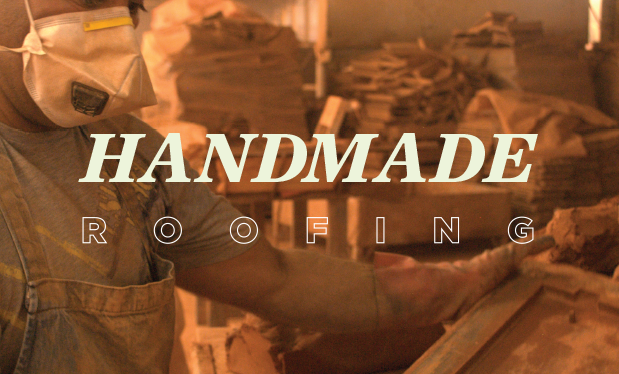Because many NRCA members’ businesses are structured under subchapter S of the tax code, NRCA has long advocated on behalf of S corporations. In 2014, the IRS estimated there were about 4.6 million S corporation owners in the U.S. Currently, S corporations are the most popular U.S. corporate structure. To understand this business structure, it is helpful to look at the history of S corporations.
Creation
In the 1950s, amid growing concern regarding the amount of economic power consolidated within large corporations, the Department of the Treasury proposed an updated corporate model to encourage small-business and family business creation in the U.S. Embraced by President Eisenhower, the proposal was formalized in 1958 when Congress created subchapter S of the tax code. An entrepreneur electing S corporation status would receive a single layer of tax with requirements to be a domestic enterprise, have a limited number and type of shareholders, and only be permitted a single class of stock.
Modifications
Given the significance of S corporations in the roofing industry, NRCA supports policies designed to protect the integrity of this structure. NRCA serves as a member of the S Corporation Association, which exists to protect and promote S corporations, and on the steering committee of the Parity for Main Street Employers, which represents all pass-through businesses. NRCA and coalition allies have been successful in achieving numerous victories on behalf of S corporations, as the rules must continually be modified to adapt to changing circumstances.
For example, prior to 2010, built-in gains (appreciated assets held by a company when it converts to or is acquired by an S corporation) held by S corporations were subject to a 10-year recognition period, which was too long for S corporations to be blocked from accessing their capital. NRCA supported reduction from the original 10-year recognition period to seven years in 2010 and five years in 2011. The five-year holding period was made permanent in 2015 as part of the Protecting Taxpayers from Tax Hikes Act. The act also permanently expanded shareholders’ charitable deductions beyond their basis in the S corporation, encouraging more charitable giving by S corporations.
In 2016, NRCA actively opposed proposed regulations under section 385 of the tax code aimed at curbing corporate inversions. The adoption of the regulations could have reclassified regular business loans as equity, leading to the creation of a second class of stock not allowed under S corporation rules, which would have threatened some businesses’ existence as S corporations. NRCA won a major victory when the Department of the Treasury released the final rule, which resolved the concerns raised by NRCA and coalition allies, ultimately preserving the status of the S corporation.
In the years leading up to the passage of the Tax Cuts and Jobs Act of 2017, NRCA was hard at work educating lawmakers regarding how federal tax policy affects the roofing industry. Consistent with NRCA’s principles for tax reform, the Tax Cuts and Jobs Act of 2017 provided relief by reducing tax rates for all types of businesses. As the corporate rate was lowered from 35% to 21%, a new 20% deduction was created for S corporations and other pass-through businesses for their qualified business income under Section 199A, effectively lowering the top individual tax rate from 39.6% to 29.6%.
Also included in the Tax Cuts and Jobs Act were two key improvements to the rules governing S corporations. For the first time since their creation, S corporations were given the ability to attract foreign investors by allowing nonresident foreign investors to own S corporations through an electing small-business trust. Additionally, the act ensured a shareholder owning an S corporation through an electing small-business trust receives a full deduction for the value of S corporation stock donated to charity, as if the shareholder owned the shares directly.
Recent legislation
Under current law, the Section 199A deduction is scheduled to sunset at the end of 2025. Earlier this year, the Main Street Tax Certainty Act (H.R. 216/S. 1149) was introduced in the House of Representatives by Reps. Jason Smith (R-Mo.) and Henry Cuellar (D-Texas) and in the Senate by Sen. Steve Daines (R-Mont.) to establish permanency of the Section 199A deduction beyond 2025. NRCA supports passage of this legislation because it is essential to prevent an effective tax increase for S corporations and other pass-through businesses.
NRCA also strongly supports the S Corporation Modernization Act of 2019 (S. 2156) introduced by Sens. Ben Cardin (D-Md.) and John Thune (R-S.D.) in July. This legislation contains several key provisions to streamline the S corporation structure. If signed into law, it would increase the threshold for taxing businesses organized as S corporations with passive investment income from 25% to 60%; remove the provision that terminates a S corporation’s status after three consecutive years of passive income; allow S corporations to have individual retirement accounts as shareholders; and level the tax treatment of asset sales with sales of S corporation stock. Bipartisan companion legislation is expected to be introduced soon in the House.
The outlook for enactment of the Main Street Tax Certainty Act and the S Corporation Modernization Act of 2019 is uncertain in the current political environment. Given the partisan nature of tax policy and the split control of Congress, any path forward appears murky at best for the remainder of the 116th Congress. NRCA remains committed to advocating in Washington, D.C., on behalf of its members structured as S corporations to support and advance the roofing industry.
Teri Dorn is NRCA's director of federal affairs.
This column is part of Rules + Regs. Click here to read additional stories from this section.



